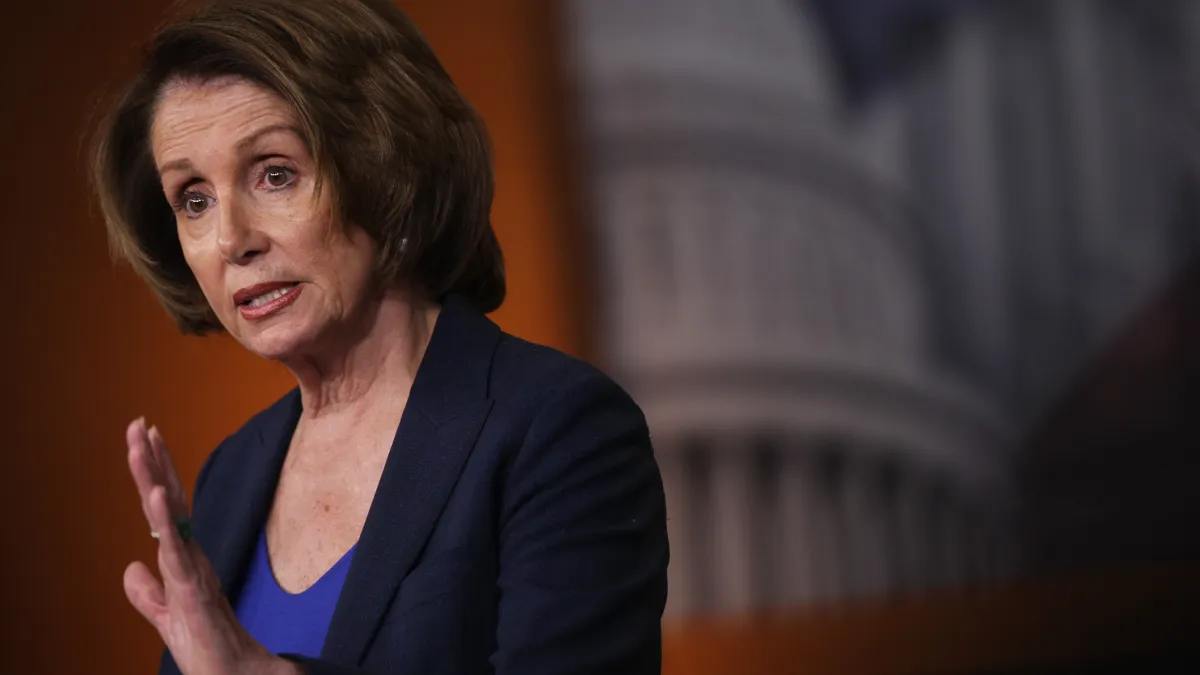Dive Brief:
- House Democrats on Tuesday approved a $3.5 trillion budget framework, keeping alive the clean energy sector's hope for a national standard to slash greenhouse gas emissions while also setting up a vote next month on a bipartisan $1 trillion infrastructure bill.
- Efficiency advocates are closely watching the process, as the infrastructure bill includes billions in investments needed to meet President Joe Biden's goal of reducing U.S. greenhouse gas emissions economywide by at least 50% by 2030, relative to 2005 levels.
- The budget agreement includes a "Clean Electricity Payment Program" that could push utilities to supply at least 80% renewable energy by 2030. However, it is unclear whether the budget framework the House passed, or the final budget blueprint, will include an efficiency standard, which the American Council for an Energy-Efficient Economy (ACEEE) says could save consumers $160 billion over the span of a decade.
Dive Insight:
The budget blueprint sets the stage for a reconciliation process that would allow Democrats to pass sweeping policies on climate and other issues without Republican support. To reach an agreement on that, leadership struck a deal with party moderates setting a firm date to vote on infrastructure, a package with bipartisan support.
House Speaker Nancy Pelosi, D-Calif., in a statement said she is "committing to pass the bipartisan infrastructure bill by September 27."
The budget framework was approved 220 to 212, with no Republican support.
ACEEE says the infrastructure bill, which has already passed the Senate, would be a boon for energy efficiency programs. The legislation includes $500 million for state energy offices and $550 million for local energy efficiency and conservation block grants.
Also included are $150 million to help small manufacturing plants identify efficiency projects — and a new $400 million grant program to implement those improvements — $500 million for clean industrial technology demonstration projects and $50 million for smart manufacturing. Billions more in funding will be available for carbon capture and hydrogen.
But big energy savings are also potentially available through budget reconciliation, where Democrats are planning additional climate investment. That process must, by law, deal only with the federal budget to allow Senate Democrats to pass it with just 51 votes.
Observers say a document from Senate Democrats contained a "Clean Electricity Payment Program" in a list of what the budget is designed to fund, so it appears the clean energy standard Biden had touted is still on the table.
"To what extent that includes efficiency is less clear and probably not determined yet," Lowell Ungar, ACEEE's director of federal policy, said in an email. Some proposals appeared to include more funding for efficiency but no set target, he said.
"We think they could do efficiency targets with relatively little federal funding, so the limitations may be not so much the budget as the politics and the bandwidth to address the issue," Ungar said.
ACEEE has proposed that the U.S. Department of Energy establish annual energy-savings targets for large
and medium-sized electric and natural gas utilities, beginning with a baseline of the savings achieved this year. After that, the group recommends annual savings targets should increase by 0.25% of sales, up to 2.5% for electric and 1.25% for gas, such that by 2031 cumulative savings reach 19.75%.
"These caps are based on what leading utilities are now doing," the group said in its proposal. The plan calls for DOE to pay utilities $0.03/kWh electricity and $3/MMBtu of gas for savings beyond those targets — and charge a penalty of double that when they fall short.
ACEEE estimated that a decade of efficiency programs would cost utilities and consumers a combined $250 billion, while reducing energy bills by approximately $410 billion over the life of the measures. That means net savings of $160 billion, the group said. In the same period, emissions savings would be approximately 730 million metric tons of carbon dioxide.
"We're assuming considerable utility and consumer spending," Ungar said in an earlier interview about the proposal. "Actual federal dollars are small."















